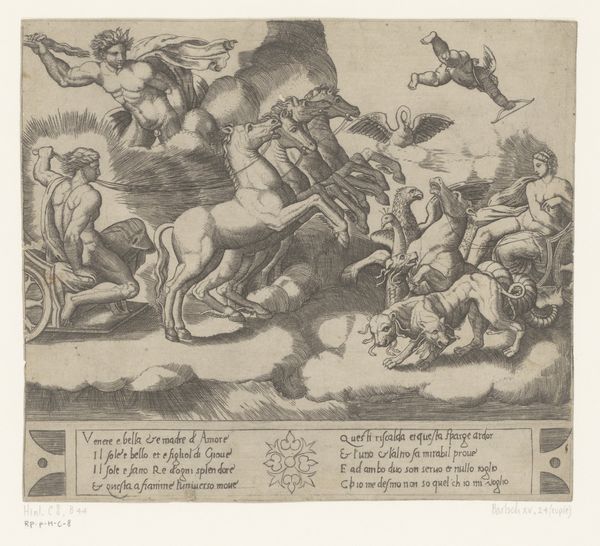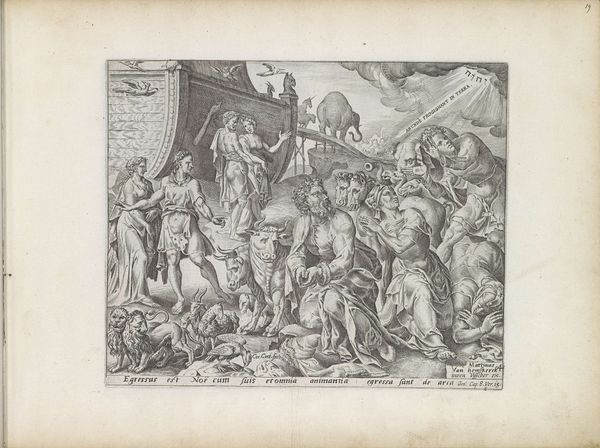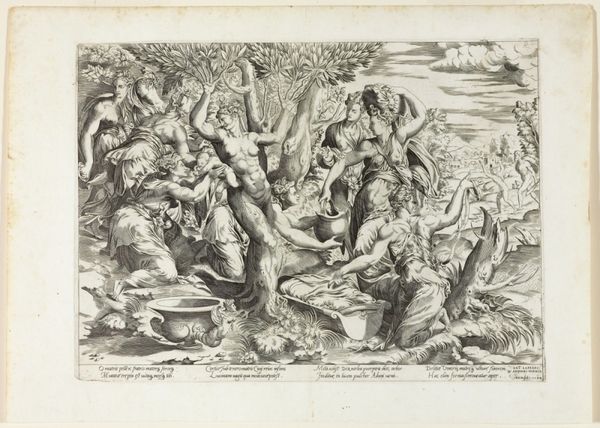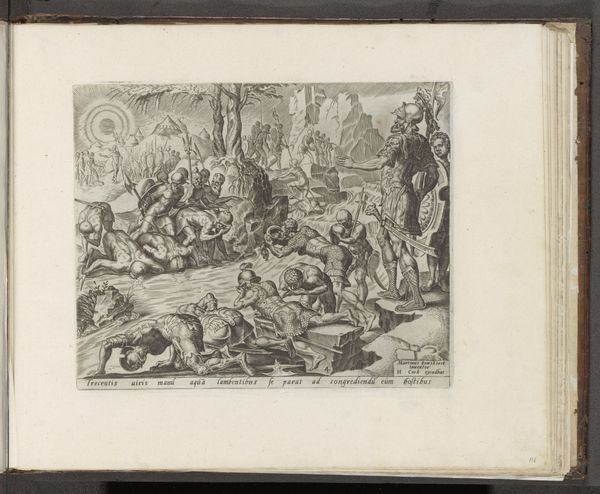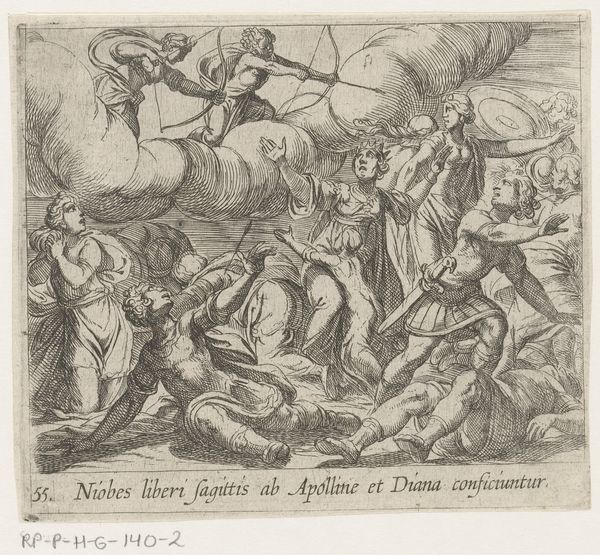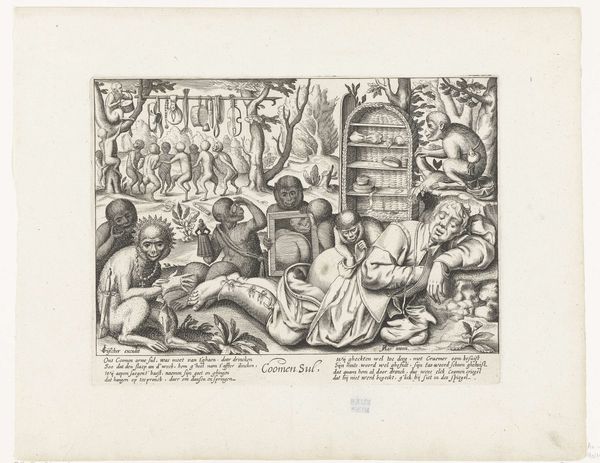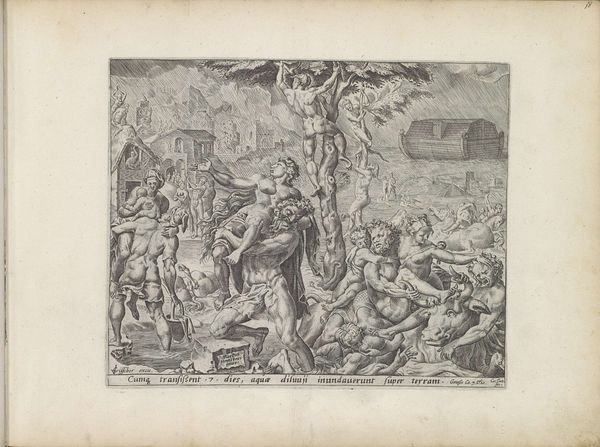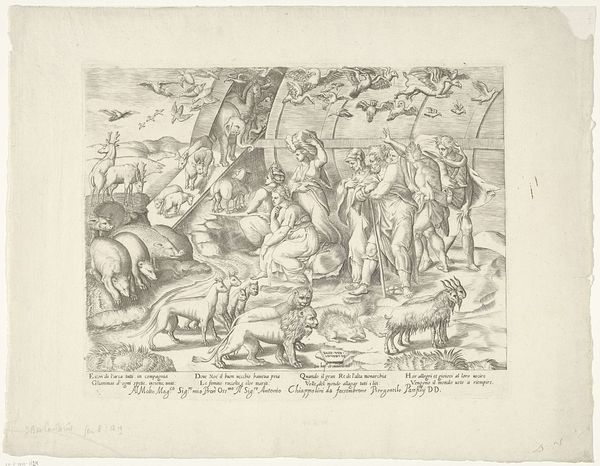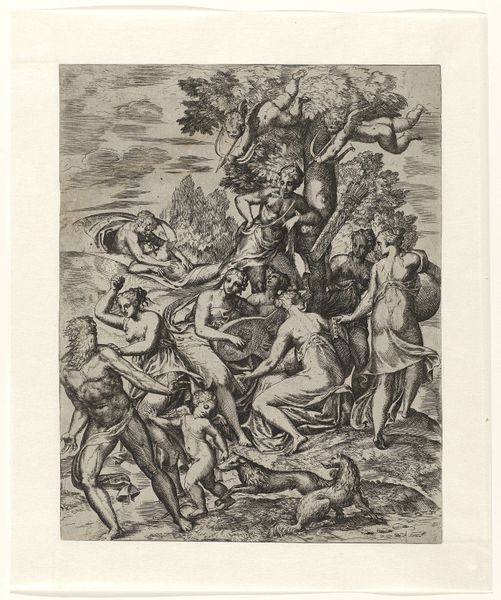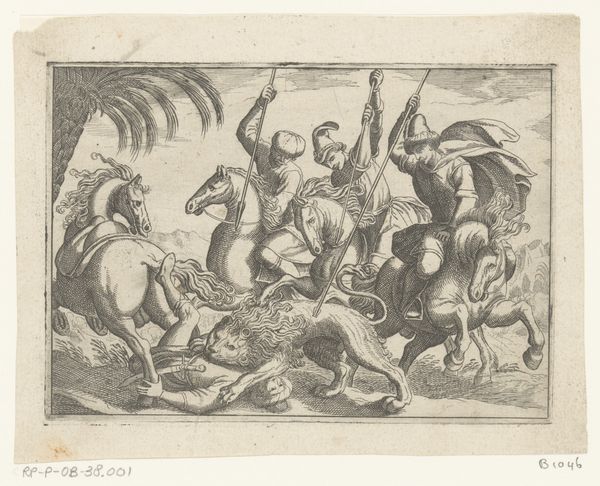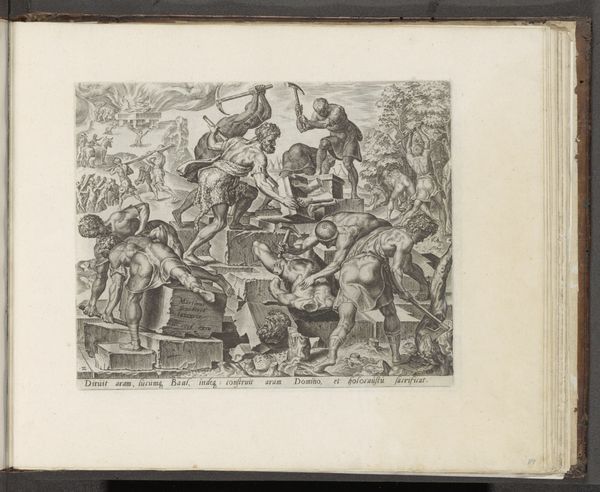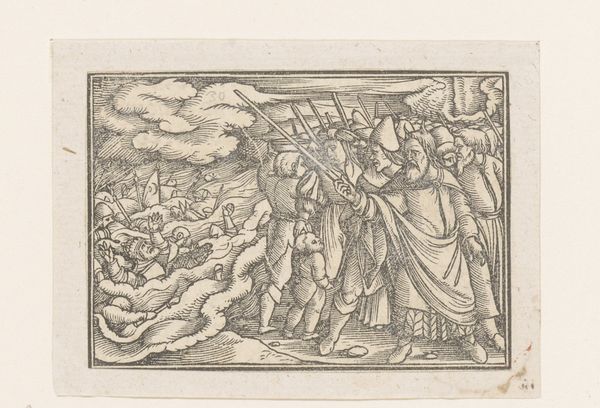
print, engraving
#
narrative-art
#
baroque
# print
#
landscape
#
figuration
#
history-painting
#
engraving
Dimensions: height 185 mm, width 206 mm
Copyright: Rijks Museum: Open Domain
Curator: "De zonen van Lara worden afgeslacht door de Moren," or "The Sons of Lara are Slaughtered by the Moors," created around 1612 by Antonio Tempesta. What captures your eye initially in this tumultuous print? Editor: I am immediately struck by the intense visual chaos. There's a dense concentration of figures and lines which make the action seem incredibly frantic. How would you begin to analyze such a complex composition? Curator: We can appreciate this composition through careful visual inspection of its deployment of line. Note how the artist employs hatching and cross-hatching to generate tonal variation and volume, contributing to the piece’s depth and dynamism. Observe the strong diagonal that leads the eye from the lower-left pile of corpses to the distant horizon filled with soldiers. This creates a sense of perspective, no? Editor: Yes, I see how that angled perspective amplifies the depth, but I'm also interested in how all the violence represented. It’s kind of brutal, isn’t it? Curator: Perhaps, but our reaction here depends on one’s subjective experience. Now, looking beyond immediate feelings, we should focus on the intrinsic pictorial values of the print. How effectively does Tempesta use the black and white contrast, and the limited vocabulary of line to construct a visually engaging composition and an understandable narrative? Editor: I think you're right, by focusing on its aesthetic properties and how all those shapes create a kind of dance within the frame, it does become less about what is portrayed and more about how it's portrayed. The arrangement, as unsettling as the topic is, can be quite intriguing. Curator: Precisely. By stripping away narrative context, and emotive impulse, one can observe Tempesta’s sophisticated deployment of Baroque strategies to engage the eye with an essentially pleasing abstract formal exercise. I have learned so much myself through close formal looking. Editor: Analyzing the use of form and technique definitely gives me a new angle to understand not just the artist's intention but the very structure of artistic expression itself!
Comments
No comments
Be the first to comment and join the conversation on the ultimate creative platform.
